Chess for Kids - Play & Learn - Kid-friendly chess learning
Introduce strategy to young minds with fun games and challenges.
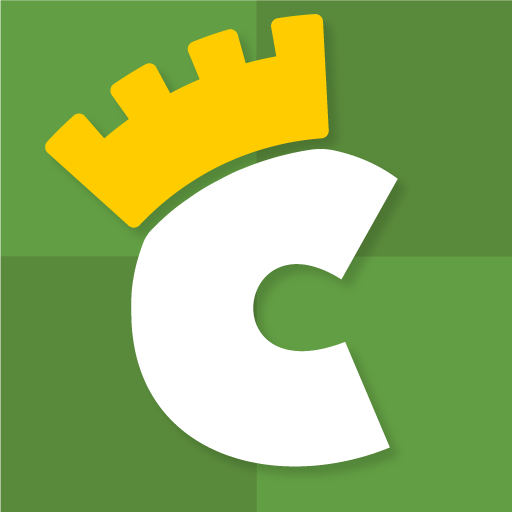
- 2.13.2 Version
- 3.5 Score
- 1M+ Downloads
- In-game purchases License
- 3+ Content Rating
Improve your chess skills with our user-friendly ChessKid app! Access free online and offline chess games, play with friends, challenge chess bots, and test your skills against a computer. Our app is designed for kids, parents, and coaches, offering both basic rules and advanced strategies in a safe, ad-free environment. Enjoy self-teaching chess tutorials to learn valuable moves.
FREE ONLINE CHESS:
- Play unlimited free chess games or enter tournaments to compete globally.
Multiple player modes available:
- Play against friends
- Slow or fast chess
The choice is yours.
Challenge other players or battle our entertaining chess bots!
CHESS COMMUNITY
- Join a global community of over 50,000 players who enjoy free chess games on ChessKid each month.
- With more than 200,000 active users playing over 500,000 games monthly, you'll always find someone to play with.
PLAY CHESS ONLINE AND OFFLINE
- Learn from 10 funny chess bots suitable for all skill levels, perfect for beginners.
- Practice your moves by playing against the computer daily to improve your game.
CHESS PUZZLES
- Solve over 350,000 brain-teasing puzzles to sharpen your tactical skills.
- Enjoy up to three free puzzles daily to enhance your chess expertise.
CHESS LESSONS
- Access kid-friendly coaching videos covering rules, strategy, tactics, openings, and more.
- Learn chess tactics from grandmasters and tutorials from FunMasterMike to enhance your skills.
- Master checkmate and become an unbeatable chess player with top-notch tutorials.
Chess transcends language barriers and names; it’s the world's ultimate strategy game. Play unlimited games for free on our apps and website. Gold members get unlimited access to puzzles and videos. Chat options are limited to games with parental supervision. Parents have complete control over their children's accounts, ensuring a safe experience.
ChessKid, brought to you by Chess.com, offers engaging cartoon characters to guide kids in mastering chess skills. Join our family today and elevate your chess game!
Why Choose It
ChessKid is Safe and Positive
No chat
Auto-generated usernames
Child activity reports
Educational Screen Time
Healthy screen time that parents can approve of
Kids learn pattern recognition and problem solving
Chess helps children learn patience and critical thinking skills that go beyond the board
Free chess apps to play on-the-go!
Classroom Approved
Used by 2000+ schools to support interactive learning
Teacher training video lessons and resources
Online chess classroom makes access from anywhere easy
Personalized Learning
Lessons are tailored to every skill level and pace
Translated into 30+ languages
Option for personal instruction from certified coaches
Option for personal chess coaching from certified coaches
How To Set Up The Chess Board
It’s important to know how to set up the board so you can play.
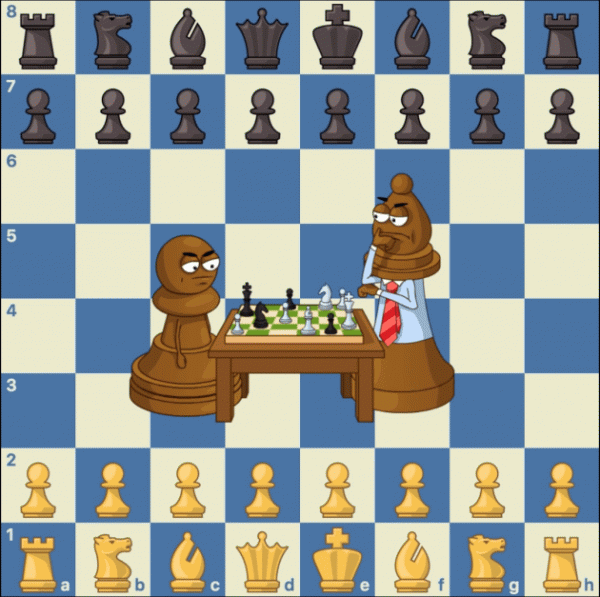
The setup of pieces is very important. The major pieces (rook and queen), minor pieces (bishop and knight), and the king are all on the last row of a chess board.
The rooks occupy the corner squares. Next to the rook is a knight. The bishop takes the other square next to the knight. The queen is always placed on her color (white queen on white square), and the king is placed next to her.
Your eight pawns occupy the next row all in a straight line. Your opponent’s pieces reflect the same positions as yours, including the queen that occupies a square that matches her color.
To start a game, White always moves first.
Any pawn may move but the strongest initial moves by pawns are by the middle ones to control the center of the board. In addition, a knight may move. Because the other pieces are blocked by the line of pawns, they may not move yet. Before we discuss opening moves more, let’s get to know each piece and how it moves.
How The Chess Pieces Move
Learning the chess pieces is very important. Let’s see how each one moves, too:
The King
The king is the most important piece because you lose the game when he is attacked and can't get to safety. This is called checkmate, and it is how a game is decided.
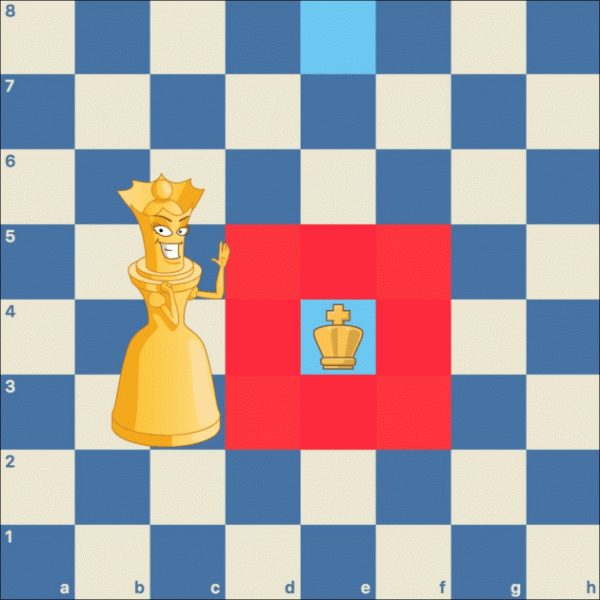
The King can move just one square at a time.
When your king is threatened by being placed in check, you must remove the threat. A king can move one square in any direction (except it moves two squares when castling, which is discussed as a special move below), but it cannot move into check or next to the enemy king. It can capture any enemy piece except the king. Because of its weakness, the king rarely plays an active role until the endgame.
The Queen
The queen is the most powerful piece because it can move in any straight-line direction: vertically, horizontally, or diagonally. It also can move any number of squares.
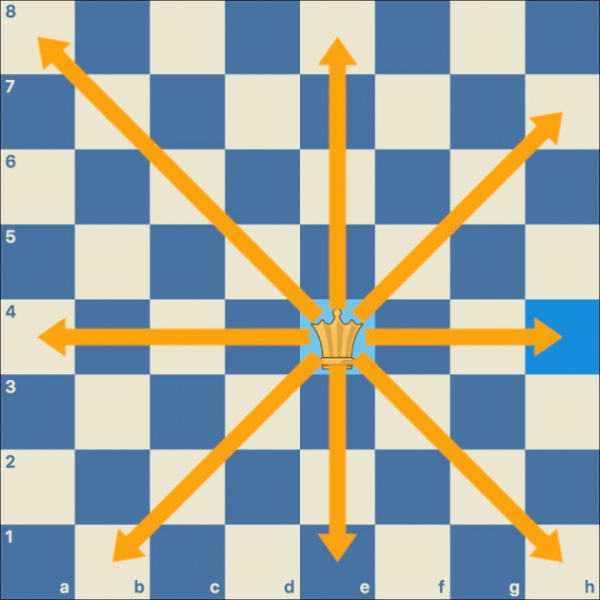
The queen can control 27 squares from the center.
Although you start with only one queen, you may gain another one when a pawn promotes (see special moves below). Because the queen is slightly stronger than a rook and bishop together, exchanging the queen for a single piece other than the enemy queen is usually not a good idea.
The Rook
You have two rooks; each one starts on a corner square. It may move vertically or horizontally through any unoccupied square.
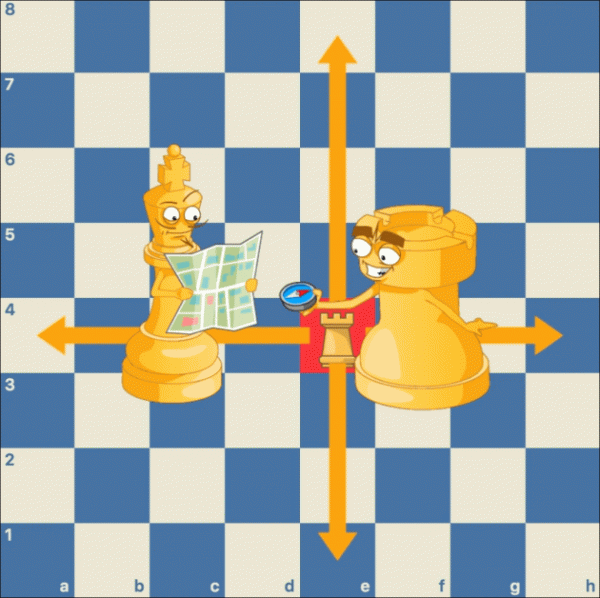
The rook controls 14 squares from the center.
It participates with the king in a special move called castling. A major piece, the rook is stronger than a bishop or knight. Rooks are very powerful in the endgame when they can control many squares and move without being blocked by pawns.
The Bishop
You also start with two bishops, one on a light square and one on a dark square. Like a rook, a bishop may move through any unoccupied square, but each one moves only diagonally.
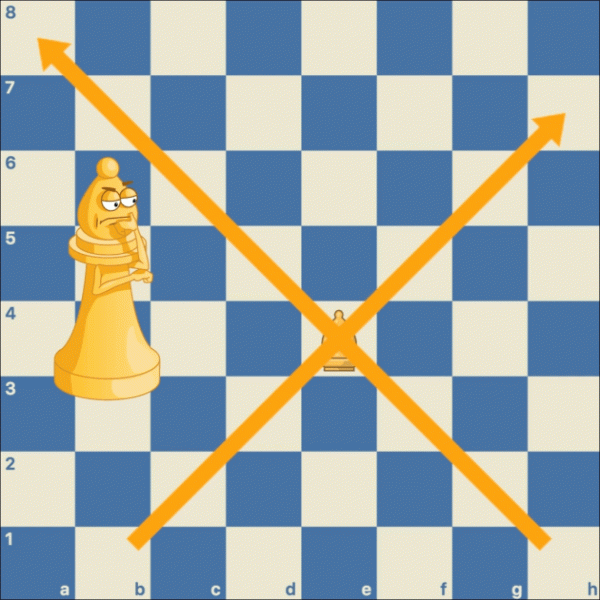
The bishop controls 13 squares from the center.
Because it always stays on the same color, it has access to only half of the squares on the board.
The Knight
Unlike other pieces, the knight moves in two directions at once. This tricky piece moves in an "L"-shaped pattern (two squares in one direction and then one square in a different direction).
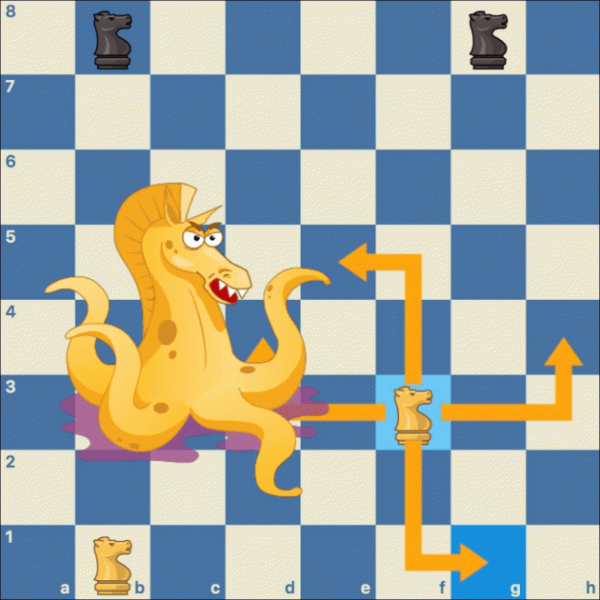
From its square, the knight can control up to eight squares.
In the center of the board, it can dangerously attack many squares and is well-suited for a tactic known as a fork. Although a minor piece, the knight is useful in “closed” games when many pieces clutter the board because it alone has the special ability to jump over any piece.
The Pawn
Each player begins with eight pawns, each one in a line in front of the other pieces.

The game starts with 16 pawns, eight white and eight black.
Until a pawn advances across the board to the final rank when it can be promoted, it is the weakest piece in most situations, but it can be valuable to block enemy pieces. Unlike other pieces, a pawn moves only forward unless it is capturing an enemy piece, which it does by moving diagonally one square to the left or right. It moves only one square except on its first move when it may move one or two squares forward. A surprising move of the pawn is the en passant capture (described in special moves below).
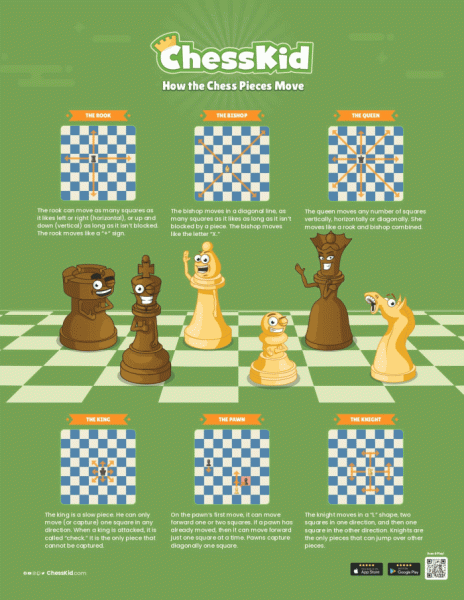
Special Chess Moves
Does chess have unusual moves? You bet! Three special moves may occur in a game:
Castling
Normally you may move just one piece at a time. However, castling involves moving two pieces at the same time: your king and a rook if they have both not been moved yet.
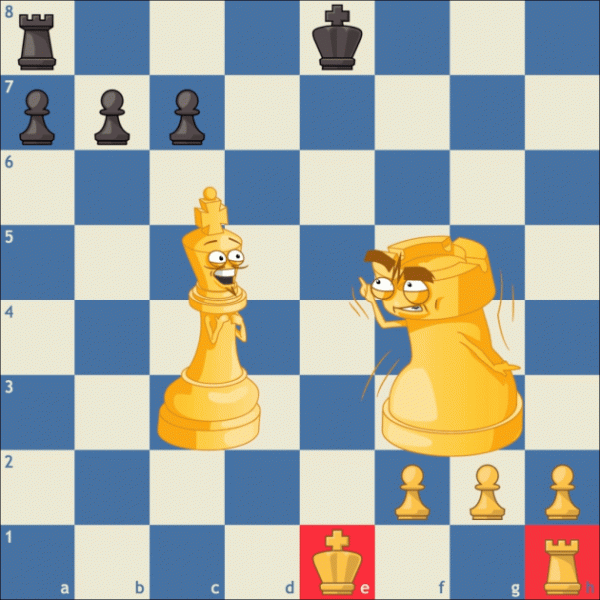
There are two types of castling: short (kingside) and long (queenside).
The king moves to two squares laterally—kingside or queenside—and the rook moves next to it on the other side. The king cannot be in check before or after castling or move through check.
En Passant
If an enemy pawn advances two squares as its initial move and lands next to one of your pawns, your pawn may capture it on your next move (but not a later move) as if it had moved just one square. Known as an en passant capture, this special move is lost if not played immediately after the enemy pawn moves.
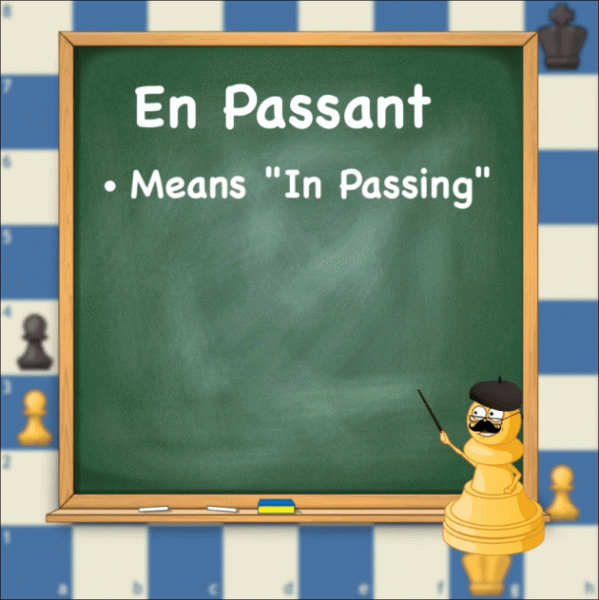
"En passant" is a French term that means "in passing."
Promotion
When a pawn reaches the other end of the board, you may turn it into any piece other than a king. Remember that the queen is the most powerful piece.

A pawn can promote into a bishop, knight, rook or queen.
A queen typically is the choice when a pawn promotes, but another piece may be more valuable (such as a knight to gain an advantage with a fork) depending on the board position. You may get more than one queen.
How A Chess Game Ends
Checkmate
A game is won when one player can checkmate the other. Checkmate occurs when a player who is next to move is in check and cannot move the king out of check.
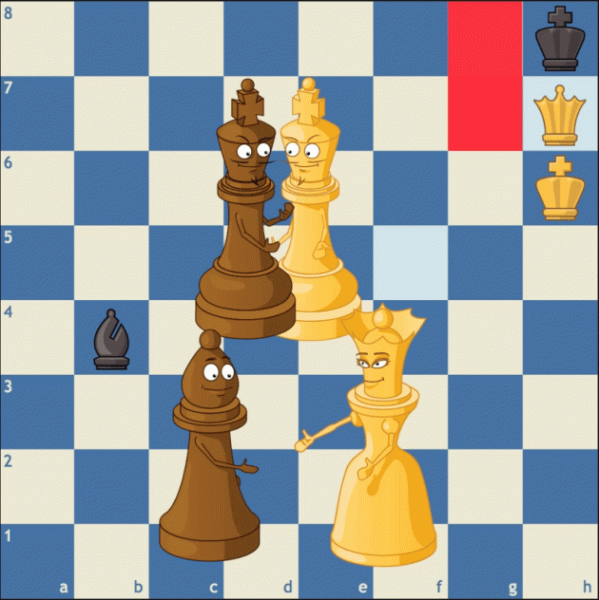
White's queen is threatening the black king, and it can't escape.
Game over!  A game may also end when a player resigns.
A game may also end when a player resigns.  Although we want to win, playing a game in a hopeless position is frustrating and discouraging. When you become experienced, it’s best to resign and start a new game in that situation, but in your first few years of playing, you should play it out as your opponent might not know how to win, or may make a big mistake.
Although we want to win, playing a game in a hopeless position is frustrating and discouraging. When you become experienced, it’s best to resign and start a new game in that situation, but in your first few years of playing, you should play it out as your opponent might not know how to win, or may make a big mistake.
Draw
Games do not always end with a win or a loss. They may also end in a draw (a tie), which is the result of neither player winning. Both players can agree to a draw, and a draw also results when a stalemate—a player on the next turn cannot make a legal move and is not in check—occurs.
A draw also occurs when neither player has sufficient pieces to checkmate an opponent, or when an event known as threefold repetition occurs (the same position occurs three times with the same player to move), or when the 50-move rule is met (the last 50 moves by each player doesn’t result in a capture or a pawn move).
How To Focus On The Rules
Rules For Making Moves
How many chess rules are there? Almost 300—but only a third relates to the game itself (most relate to tournament play and other details). As you begin to play, focus on the rules explained above for moving pieces (so you already know many rules).
Touch-Move And Capturing Rules
During a game, you and your opponent take turns making moves. An important rule to know is the “touch-move” rule, which states that a player must move a piece when touched if the piece has a legal move (this doesn't apply to online chess). When you move a piece and occupy the square where an opponent’s piece is located, you capture it. To capture means that you take the opponent’s piece off the board and move your piece to that square.
How To Begin A Chess Game
Opening Moves
Although you already know many important rules, you also need to understand chess strategy. The first moves are known as opening moves, or the opening.
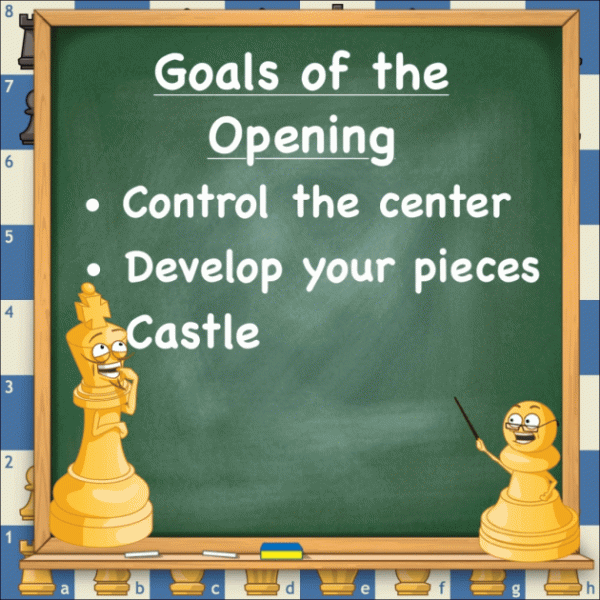
Goals of the opening in Chess.
In this part of a game, you want to begin to control an area of the board, and the center is very important to control. During this time, keep your king protected and look for opportunities to capture your opponent’s pieces or threaten them.
Chess Strategy For Beginners
Initially keep pawn moves to a minimum—just enough to stake out the center. Develop other pieces and improve their mobility. A good strategy is to avoid moving the same piece twice in the opening, so that you develop several pieces initially. Before you make too many moves, consider castling to keep the king safe.
First Moves
For a beginning player, a first move often is advancing the pawn in front of the king or queen. This move helps to control the board’s central squares; it also frees a bishop to move. No pawn has to be moved to put a knight into action because it can jump over the starting line of pawns.
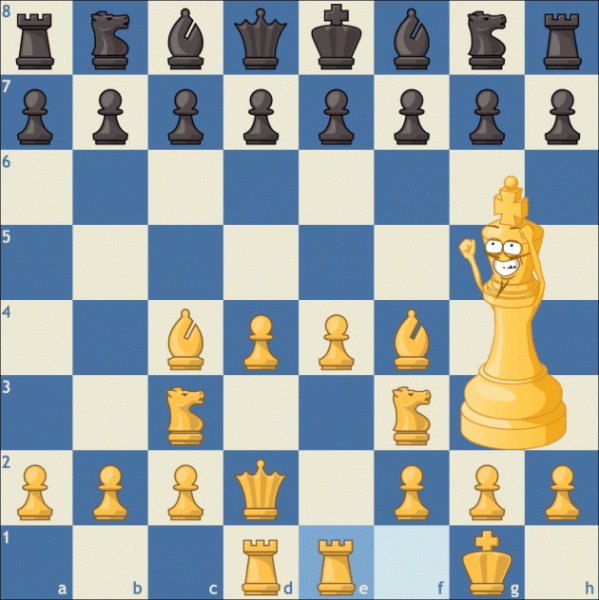
Positions of White's pieces after a successful start.
As you move, make sure that your pieces are protected and look for where you can place your pieces to work together. When your opponent moves, try to understand why that move was chosen and how it affects your pieces, particularly the safety of your king. (My favorite opening move is e4. What does that mean? Read next about chess notation.)
ABOUT CHESSKID:
ChessKid by Chess.com - the leading online chess platform.
#1 scholastic chess app.
Trusted by 2,000 schools and 3 million kids worldwide.
- Version2.13.2
- UpdateSep 04, 2025
- DeveloperChess.com
- CategoryBoard & Casino
- Requires AndroidAndroid 8.0+
- Downloads1M+
- Package Namecom.chesskid
- Signatureeb2c8b17396dae4b890153786198acb5
- Available on
- ReportFlag as inappropriate
-
NameSizeDownload
-
46.15 MB
-
46.04 MB
-
45.80 MB


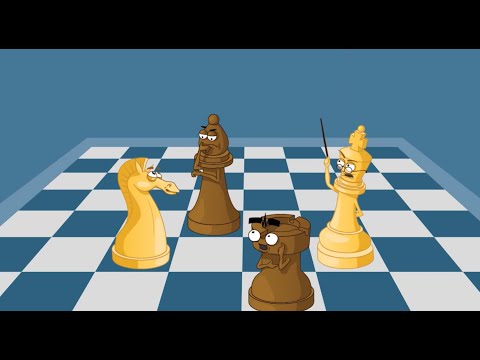
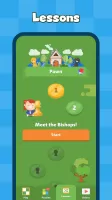
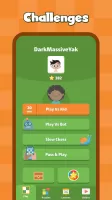
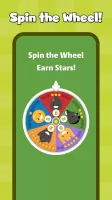
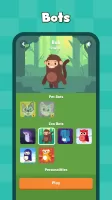

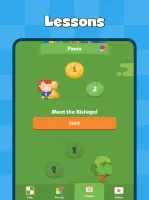
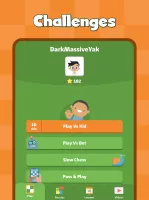
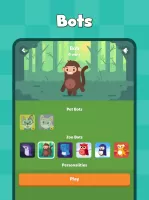
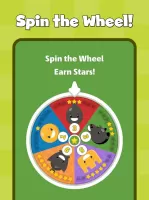

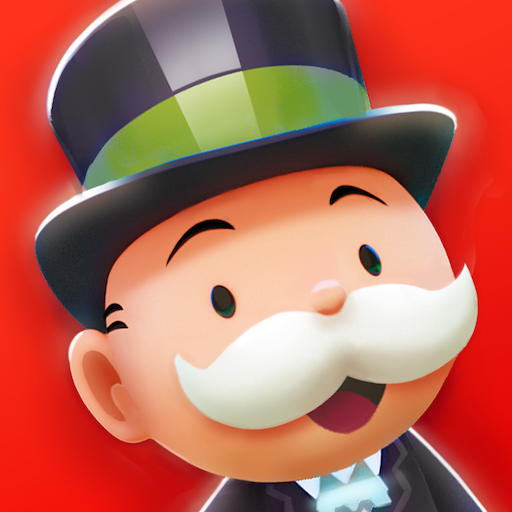

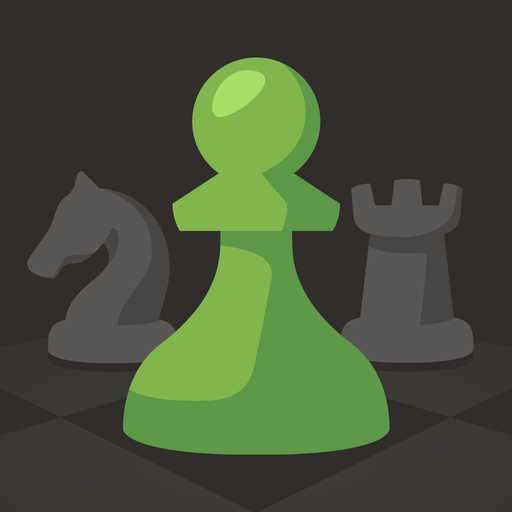
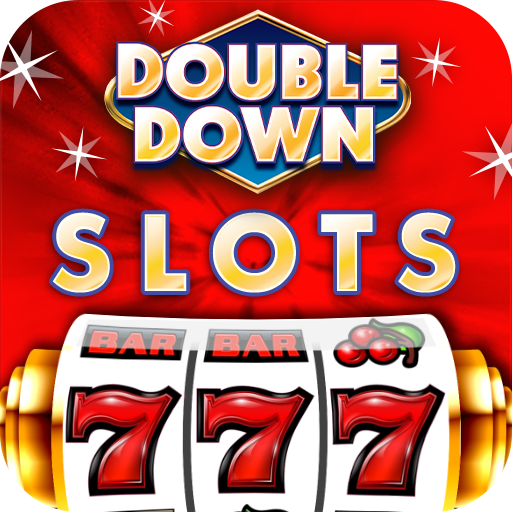






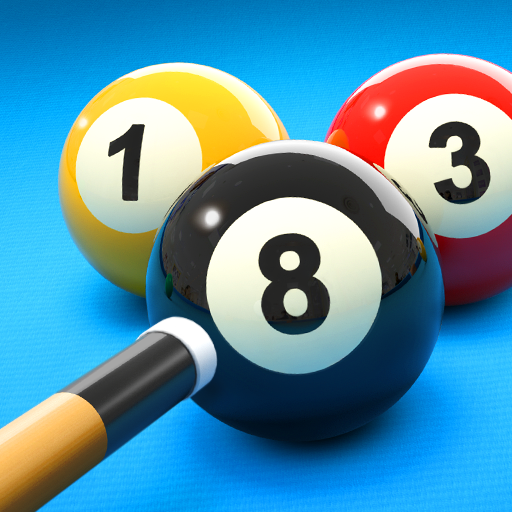






Helps improve children's logical thinking, creativity and problem-solving skills
By winning a game or improving performance, children can gain a sense of achievement, which can enhance their confidence and self-esteem
Can play with players from all over the world
Lack of direct real-life human interaction
Sometimes the matching mechanism is unbalanced